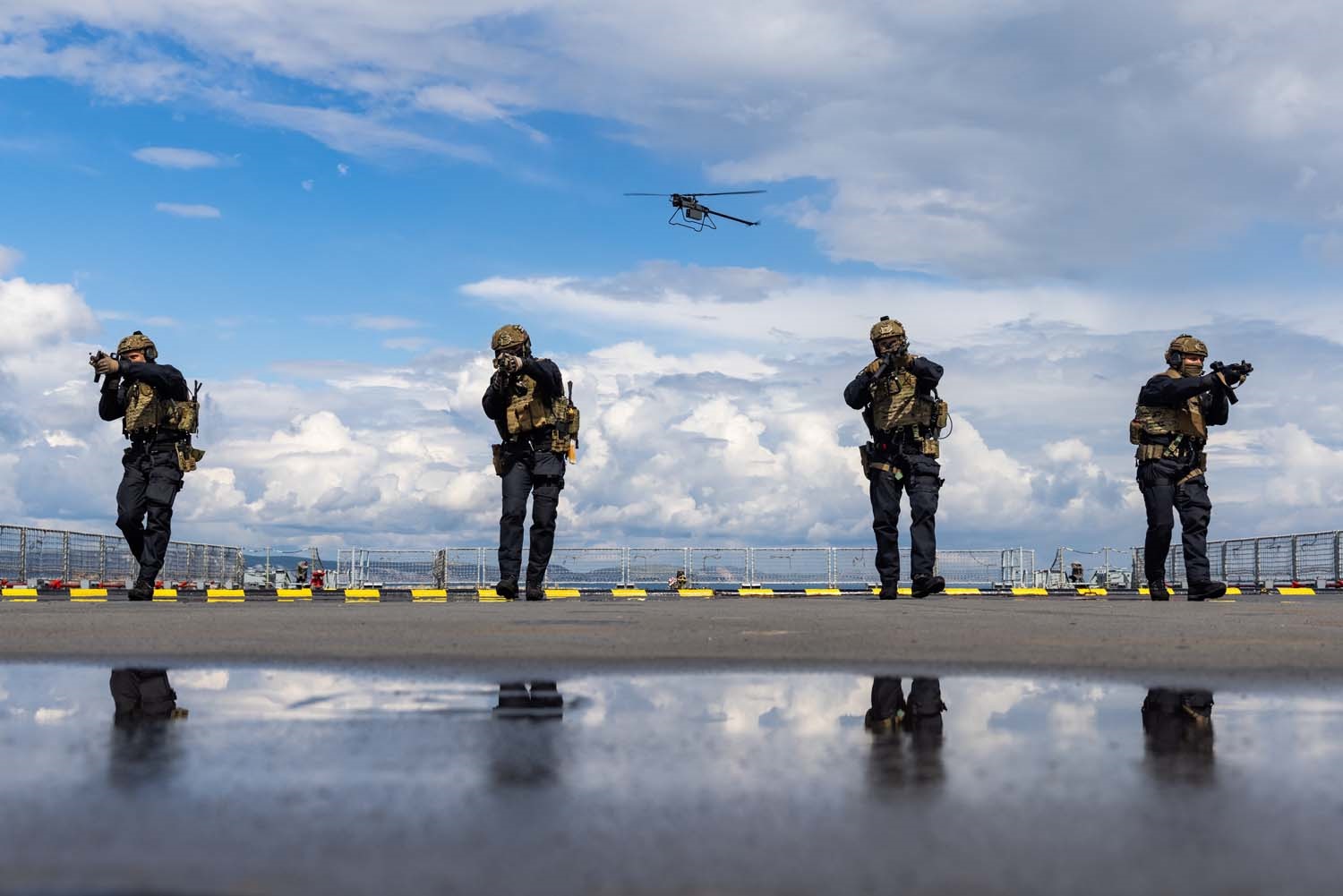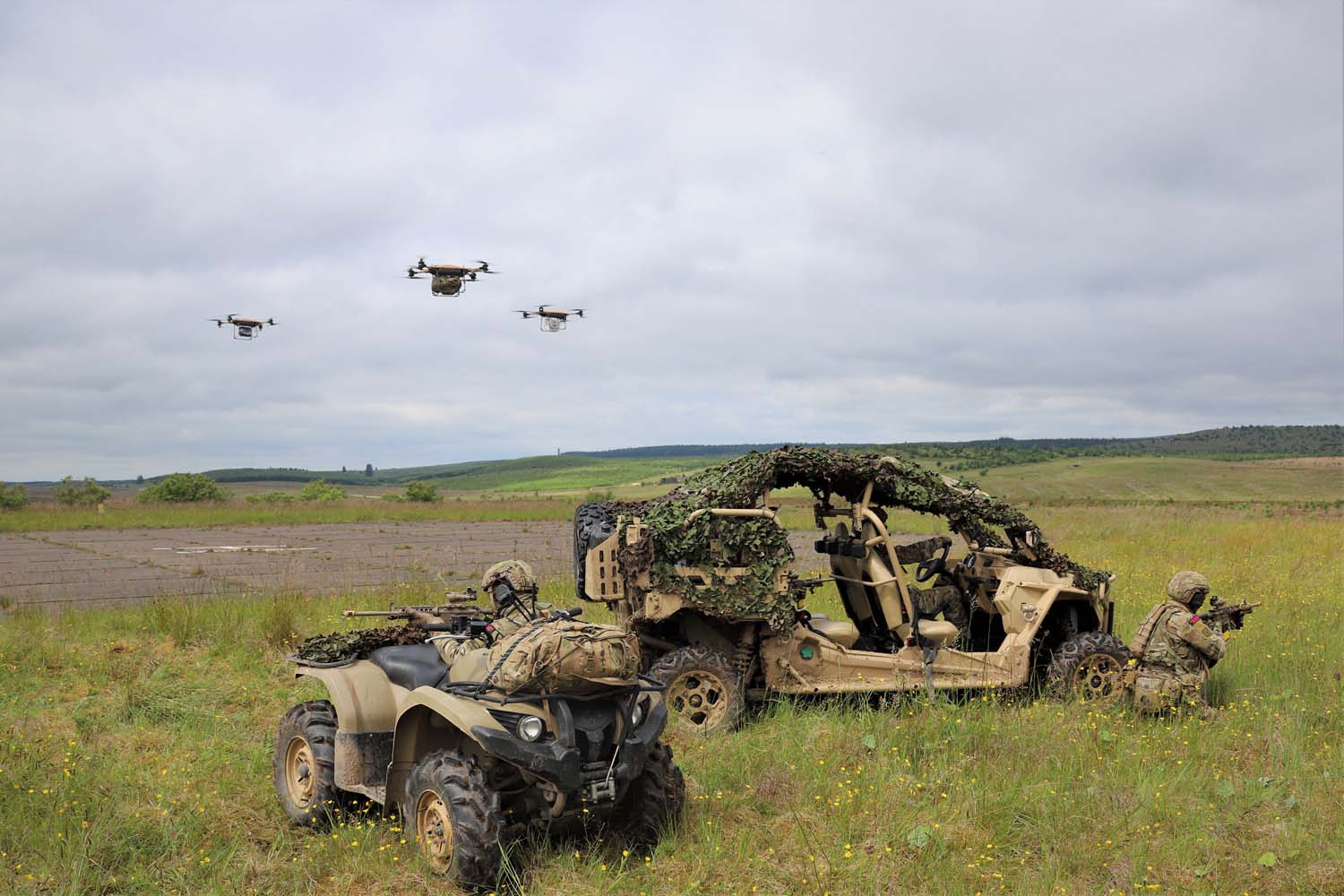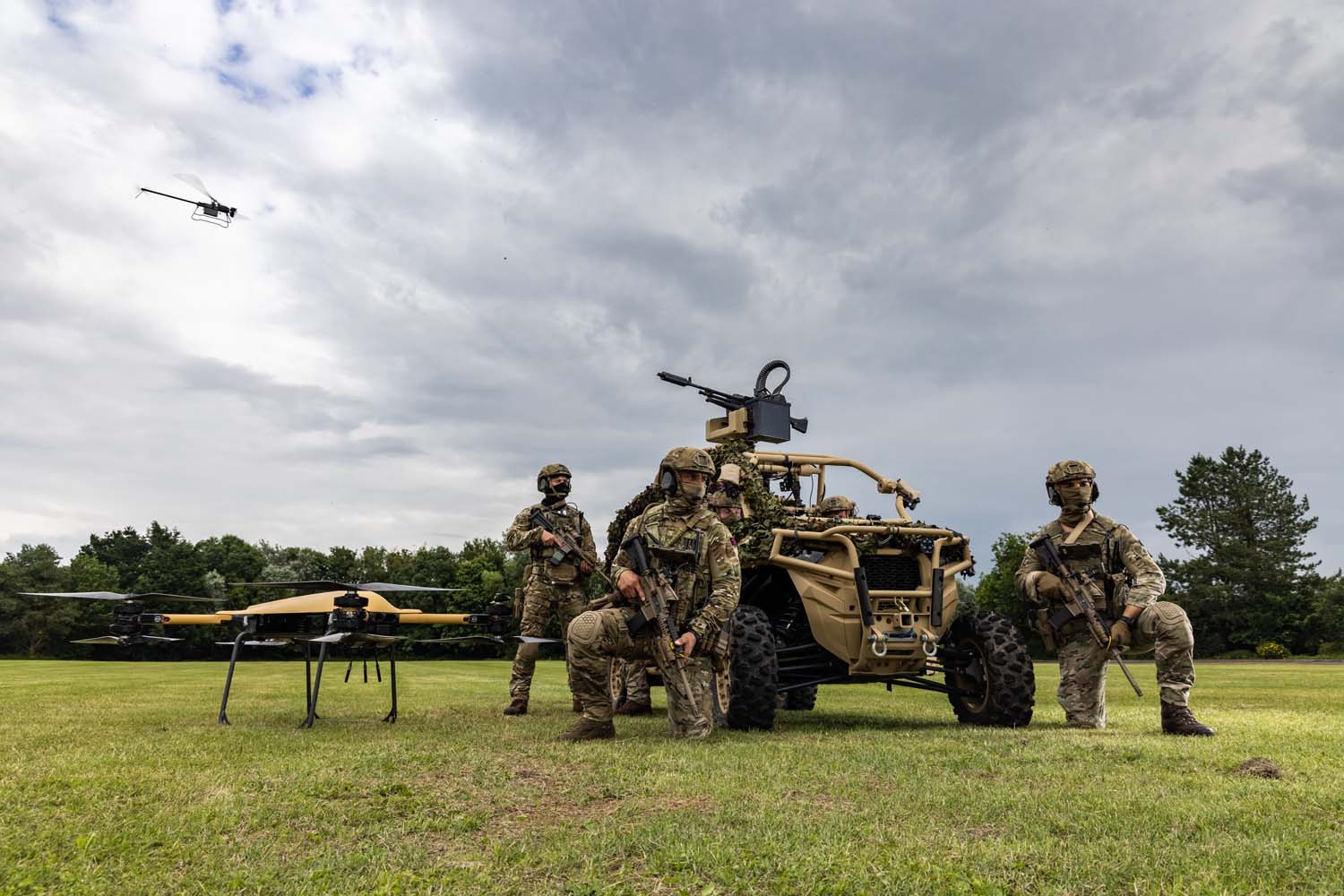Drones dived, sailed and flew together in a swarm in a first for the UK’s armed forces during experimental exercises with the Royal Marines. An array of autonomous systems operated underwater, on the water, in the sky and over land to help Royal Marines Commandos as they carried out training raids on a number of complex ‘adversary’ positions – such as missile and radar installations – in Cumbria and Dorset. The uncrewed systems were used on missions at the Electronic Warfare Tactics facility at RAF Spadeadam on the border with Northumberland and off the south coast in training areas around Lulworth Cove and the Defence BattleLab.
In a first for UK Defence a group of six medium-heavy lift drones were operated in one autonomously controlled swarm from a single ground control station. The drones were tasked with tactically re-supplying commandos with everything from ammunition for the assaulting troops, through to blood for combat medics. The swarm also demonstrated significant flexibility and switched roles to conduct reconnaissance missions to provide intelligence for commando raids ashore and at sea against a hostile target, when launched from RFA Mounts Bay. The autonomous systems also worked together accurately using their range of increasingly powerful sensors and target acquisition algorithms.

The trials – named Autonomous Advance Force 4.0 – are the latest in a series of experimental exercises that have developed ways in which the UK Commando Force will operate in the future, putting an emphasis on human and machines teaming closely together to gain a battlefield advantage. The ultimate aim is to seamlessly embed autonomous systems on the front line to support commando forces on the battlefield. These experiments scrutinise tactics and develop knowledge of how the drones can and cannot be used.
Royal Marines strike teams from Alpha Company, of Taunton-based 40 Commando, were on the ground and able to call on swarms of Malloy TRV150 drones – which can lift up to 68kg in all weathers – for deliveries of ammunition, blood and other supplies. The commandos carried a small rugged tablet on their chest giving the ability to tap a map location and time for the delivery of their supplies, leaving the Malloys to do the rest and drop in what they need when they need it.The Ghost is very difficult to detect, can fly autonomously, accurately identify targets and has a long endurance.

Also plugging into this network were Remus underwater vehicles dropped into the sea by the Malloy TRV150s. Remus can scan the ocean for mines and obstructions using an array of sensors to feed valuable information back to the amphibious command and help make decisions on where marine forces can land ashore via a clear route. On the waves, the Royal Navy’s MADFOX vessel scanned the horizon using advanced sensors.The autonomous vessel can carry out reconnaissance operations and surveillance patrols, providing valuable information on a coastal area before Royal Marines get in their raiding craft to come ashore.
Adding to the already impressive range of autonomous systems, the commandos also had the fixed-wing Cobra drone flying overhead. The Cobra – which has a 3.1m wingspan and long endurance – can be launched from unprepared ground or from ship and is used for identifying and tracking targets. This drone can be carried in a backpack and has been engineered to function in harsh environments, ideal for following commandos into all extremes of climate. Finally, the commandos carried out simulator and range training with the Tactical Precision Strike system – which is what’s known as a lethal loitering munition.

